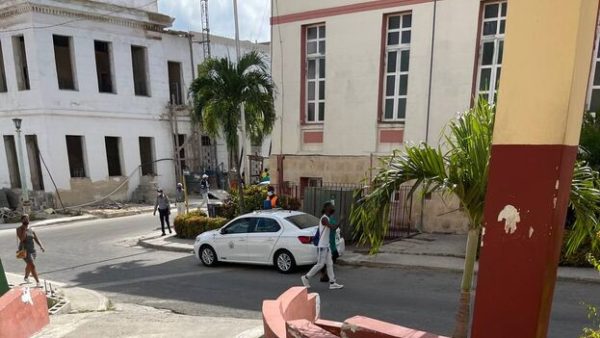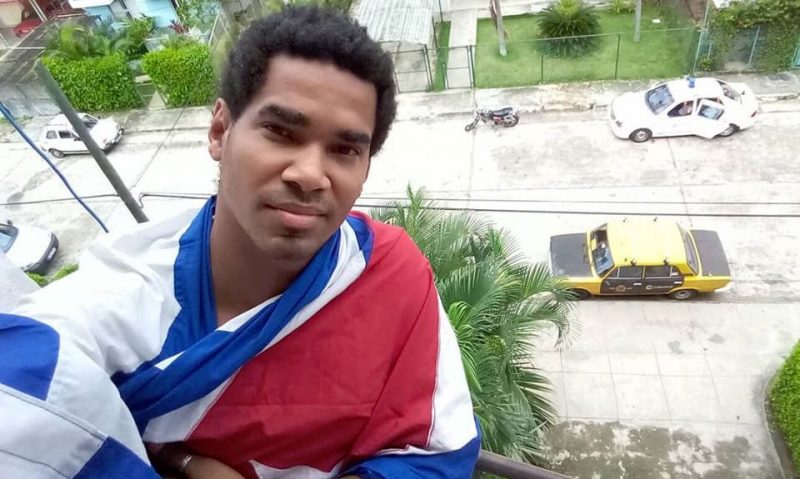The Most Closely Watched Patient in the World

HAVANA TIMES – It is easy to spot them: they wear their hair short and closely observe everyone who passes near the Calixto García Hospital in Havana. They are the members of the State Security who patrol the hospital where the artist Luis Manuel Otero Alcántara, the most closely watched patient in the world, has been admitted since May 2. Since he was taken to the hospital by State Security, he has only been seen through crude, highly edited videos that the political police themselves disseminate.
Otero Alcántara’s friends insist on speaking directly with him but they have not been allowed to visit him, nor does the artist have access to a telephone to communicate without intermediaries. The days are accumulating (now 27) and the official version is becoming more and more untenable, according to which, after more than a week on a hunger and thirst strike in protest of the repression, this 33-year-old Havanan arrived at the hospital in perfect condition and with some enviable health indicators.
If he is in good physical shape, why has he been held there for nearly four weeks? What is really happening in the long days that the artist spends between the four walls of a hospital room? All the answers that come to mind when asking such questions are, to say the least, disturbing. The official medical apparatus’s complicity with the repression has a long history on this Island. The publication of medical records of dissidents in the official media without consulting them, and the confinement in asylums of people who protested peacefully in public places are part of this worrying collusion.
If, to that, is added the strict surveillance operation that surrounds the Calixto García Hospital since Otero Alcántara’s arrival at one of its pavilions and the arrest of several activists who have tried to get closer, then the concerns grow even more. Among those who could gain access to the place, surrounded by some protection, are the most important figures of the Catholic Church, members of the foreign diplomatic corps and foreign media correspondents whose job it is to report what is happening on the island. But none have done so.
It is unknown so far if there have been efforts by any of them to access the room where the artist spends his days, but it is most likely that most of these bishops, ambassadors and accredited reporters have weighed the cost of making a request of that nature to the Cuban authorities. For the moment, their paralysis suggests that they have measured the price of interceding or reporting on the situation in Otero Alcántara and, after evaluating the pros and cons, they have chosen to keep their distance and not bother Havana’s Plaza of the Revolution.
While the accomplices are silent and the undecided remain in the shadows, the life of a man who until recently was pure energy may be falling over the precipice into a dark abyss. The irreverent artist who organized an independent art biennial, protested the removal of the bust of a communist leader and carried the Cuban flag over his body for several days, now looks quiet and bony in the images filtered by the ruling party: a patient with a dull gaze dull and debilitated body.







The dictatorship is also persecuting the LGBT again. They are going after artist, journalists, and bloggers. Cuba has deteriorated sine Diaz Canel came into office. Cuba needs a new government.
The news organizations accredited in the island don’t want to lose their credit with the Cuban dictatorship. They rather to turn blind and silent. Imagine for a second how CNN would be reporting nonstop if this were in any other Latin American nation
The dictatorship kidnapped an activist demanding his rights as citizen and as human , and the world watch silently. Shame on the European Union and some hypocritical international humans rights in the world for not condemning this horrific act of the Cuban obsolete dictatorship